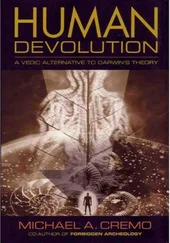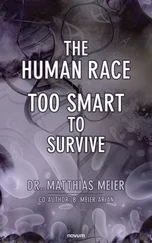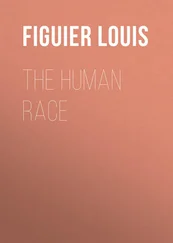Michael Cremo - Forbidden Archeology - The Hidden History of the Human Race
Здесь есть возможность читать онлайн «Michael Cremo - Forbidden Archeology - The Hidden History of the Human Race» весь текст электронной книги совершенно бесплатно (целиком полную версию без сокращений). В некоторых случаях можно слушать аудио, скачать через торрент в формате fb2 и присутствует краткое содержание. Год выпуска: 1992, ISBN: 1992, Издательство: Torchlight Publishing, Жанр: Старинная литература, на английском языке. Описание произведения, (предисловие) а так же отзывы посетителей доступны на портале библиотеки ЛибКат.
- Название:Forbidden Archeology: The Hidden History of the Human Race
- Автор:
- Издательство:Torchlight Publishing
- Жанр:
- Год:1992
- ISBN:9780892132942
- Рейтинг книги:4 / 5. Голосов: 1
-
Избранное:Добавить в избранное
- Отзывы:
-
Ваша оценка:
- 80
- 1
- 2
- 3
- 4
- 5
Forbidden Archeology: The Hidden History of the Human Race: краткое содержание, описание и аннотация
Предлагаем к чтению аннотацию, описание, краткое содержание или предисловие (зависит от того, что написал сам автор книги «Forbidden Archeology: The Hidden History of the Human Race»). Если вы не нашли необходимую информацию о книге — напишите в комментариях, мы постараемся отыскать её.
Forbidden Archeology: The Hidden History of the Human Race — читать онлайн бесплатно полную книгу (весь текст) целиком
Ниже представлен текст книги, разбитый по страницам. Система сохранения места последней прочитанной страницы, позволяет с удобством читать онлайн бесплатно книгу «Forbidden Archeology: The Hidden History of the Human Race», без необходимости каждый раз заново искать на чём Вы остановились. Поставьте закладку, и сможете в любой момент перейти на страницу, на которой закончили чтение.
Интервал:
Закладка:
In Chapter 6, we review discoveries of anomalously old skeletal remains of the anatomically modern human type. Perhaps the most interesting case is that of Castenedolo, Italy, where in the 1880s, G. Ragazzoni, a geologist, found fossil bones of several Homo sapiens sapiens individuals in layers of Pliocene sediment 3 to 4 million years old. Critics typically respond that the bones must have been placed into these Pliocene layers fairly recently by human burial. But Ragazzoni was alert to this possibility and carefully inspected the overlying layers. He found them undisturbed, with absolutely no sign of burial.
Modern scientists have used radiometric and chemical tests to attach recent ages to the Castenedolo bones and other anomalously old human skeletal remains. But, as we show in Appendix 1, these tests can be quite unreliable. The carbon 14 test is especially unreliable when applied to bones (such as the Castenedolo bones) that have lain in museums for decades. Under these circumstances, bones are exposed to contamination that could cause the carbon 14 test to yield abnormally young dates. Rigorous purification techniques are required to remove such contamination. Scientists did not employ these techniques in the 1969 carbon 14 testing of some of the Castenedolo bones, which yielded an age of less than a thousand years.
Although the carbon 14 date for the Castenedolo material is suspect, it must still be considered as relevant evidence. But it should be weighed along with the other evidence, including the original stratigraphic observations of Ragazzoni, a professional geologist. In this case, the stratigraphic evidence appears to be more conclusive.
Opposition, on theoretical grounds, to a human presence in the Pliocene is not a new phenomenon. Speaking of the Castenedolo finds and others of similar antiquity, the Italian scientist G. Sergi wrote in 1884: “By means of a despotic scientific prejudice, call it what you will, every discovery of human remains in the Pliocene has been discredited.”
A good example of such prejudice is provided by R. A. S. Macalister, who in 1921 wrote about the Castenedolo finds in a textbook on archeology: “There must be something wrong somewhere.” Noting that the Castenedolo bones were anatomically modern, Macalister concluded: “If they really belonged to the stratum in which they were found, this would imply an extraordinarily long standstill for evolution. It is much more likely that there is something amiss with the observations.” He further stated: “The acceptance of a Pliocene date for the Castenedolo skeletons would create so many insoluble problems that we can hardly hesitate in choosing between the alternatives of adopting or rejecting their authenticity.” This supports the primary point we are trying to make in Forbidden Archeology, namely, that there exists in the scientific community a knowledge filter that screens out unwelcome evidence. This process of knowledge filtration has been going on for well over a century and continues right up to the present day.
Our discussion of anomalously old human skeletal remains brings us to the end of Part I, our catalog of controversial evidence. In Part II of Forbidden Archeology, we survey the body of accepted evidence that is generally used to support the now-dominant ideas about human evolution.
Chapter 7 focuses on the discovery of Pithecanthropus erectus by Eugene Dubois in Java during the last decade of the nineteenth century. Historically, the Java man discovery marks a turning point. Until then, there was no clear picture of human evolution to be upheld and defended. Therefore, a good number of scientists, most of them evolutionists, were actively considering a substantial body of evidence (cataloged in Part I ) indicating that anatomically modern humans existed in the Pliocene and earlier. With the discovery of Java man, now classified as Homo erectus, the long-awaited missing link turned up in the Middle Pleistocene. As the Java man find won acceptance among evolutionists, the body of evidence for a human presence in more ancient times gradually slid into disrepute.
This evidence was not conclusively invalidated. Instead, at a certain point, scientists stopped talking and writing about it. It was incompatible with the idea that apelike Java man was a genuine human ancestor.
As an example of how the Java man discovery was used to suppress evidence for a human presence in the Pliocene and earlier, the following statement made by W. H. Holmes about the California finds reported by J. D. Whitney is instructive. After asserting that Whitney’s evidence “stands absolutely alone,” Holmes complained that “it implies a human race older by at least one-half than Pithecanthropus erectus, which may be regarded as an incipient form of human creature only.” Therefore, despite the good quality of Whitney’s evidence, it had to be dismissed.
Interestingly enough, modern researchers have reinterpreted the original Java Homo erectus fossils. The famous bones reported by Dubois were a skullcap and femur. Although the two bones were found over 45 feet apart, in a deposit filled with bones of many other species, Dubois said they belonged to the same individual. But in 1973, M. H. Day and T. I. Molleson determined that the femur found by Dubois is different from other Homo erectus femurs and is in fact indistinguishable from anatomically modern human femurs. This caused Day and Molleson to propose that the femur was not connected with the Java man skull.
As far as we can see, this means that we now have an anatomically modern human femur and a Homo erectus skull in a Middle Pleistocene stratum that is considered to be 800,000 years old. This provides further evidence that anatomically modern humans coexisted with more apelike creatures in unexpectedly remote times. According to standard views, anatomically modern humans arose just 100,000 years ago in Africa. Of course, one can always propose that the anatomically modern human femur somehow got buried quite recently into the Middle Pleistocene beds at Trinil. But the same could also be said of the skull.
In Chapter 7, we also consider the many Java Homo erectus discoveries reported by G. H. R. von Koenigswald and other researchers. Almost all of these bones were surface finds, the true age of which is doubtful. Nevertheless, scientists have assigned them Middle and Early Pleistocene dates obtained by the potassium-argon method. The potassium-argon method is used to date layers of volcanic material, not bones. Because the Java Homo erectus fossils were found on the surface and not below the intact volcanic layers, it is misleading to assign them potassium-argon dates obtained from the volcanic layers.
The infamous Piltdown hoax is the subject of Chapter 8. Early in this century, Charles Dawson, an amateur collector, found pieces of a human skull near Piltdown. Subsequently, scientists such as Sir Arthur Smith Woodward of the British Museum and Pierre Teilhard de Chardin participated with Dawson in excavations that uncovered an apelike jaw, along with several mammalian fossils of appropriate antiquity. Dawson and Woodward, believing the combination of humanlike skull and apelike jaw represented a human ancestor from the Early Pleistocene or Late Pliocene, announced their discovery to the scientific world. For the next four decades, Piltdown man was accepted as a genuine discovery and was integrated into the human evolutionary lineage.
In the 1950s, J. S. Weiner, K. P. Oakley, and other British scientists exposed Piltdown man as an exceedingly clever hoax, carried out by someone with great scientific expertise. Some blamed Dawson or Teilhard de Chardin, but others have accused Sir Arthur Smith Woodward of the British Museum, Sir Arthur Keith of the Hunterian Museum of the Royal College of Surgeons, William Sollas of the geology department at Cambridge, and Sir Grafton Eliot Smith, a famous anatomist.
Читать дальшеИнтервал:
Закладка:
Похожие книги на «Forbidden Archeology: The Hidden History of the Human Race»
Представляем Вашему вниманию похожие книги на «Forbidden Archeology: The Hidden History of the Human Race» списком для выбора. Мы отобрали схожую по названию и смыслу литературу в надежде предоставить читателям больше вариантов отыскать новые, интересные, ещё непрочитанные произведения.
Обсуждение, отзывы о книге «Forbidden Archeology: The Hidden History of the Human Race» и просто собственные мнения читателей. Оставьте ваши комментарии, напишите, что Вы думаете о произведении, его смысле или главных героях. Укажите что конкретно понравилось, а что нет, и почему Вы так считаете.












